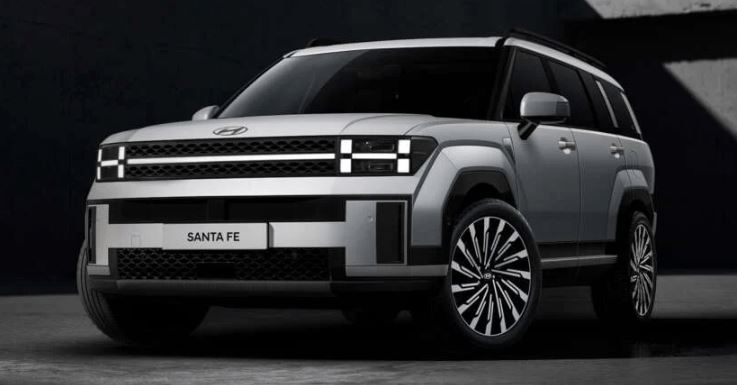Introducing the 5th Generation Santa Fe: Hyundai’s Striking Redesign
Hyundai has recently unveiled the highly anticipated 5th generation Santa Fe, showcasing significant changes and advancements compared to its predecessor. The previous model, first introduced in 2018 and later receiving a facelift in 2020, enjoyed a successful five-year tenure before making way for its eagerly awaited successor.
Although automotive enthusiasts are eagerly awaiting the arrival of the new Santa Fe, they will have to exercise some patience, as the vehicle is scheduled to be released in 2024. In Hyundai’s official press release, the company describes the 5th generation Santa Fe as a revolutionary departure from convention. With a design approach centered around a lifestyle-based typology, Hyundai aims to optimize rear cargo capacity and create a vehicle that seamlessly caters to both outdoor adventures and urban activities.
When it comes to visual appeal, the 5th generation Santa Fe boasts a distinctive boxy and straight-edged appearance. This redesign is attributed to the vehicle’s longer wheelbase and expanded tailgate area. Although specific dimensions have not been disclosed, it is evident that the new iteration will feature larger proportions compared to its predecessor. To provide context, the previous model had an overall length of 4,770 mm and a wheelbase of 2,765 mm.
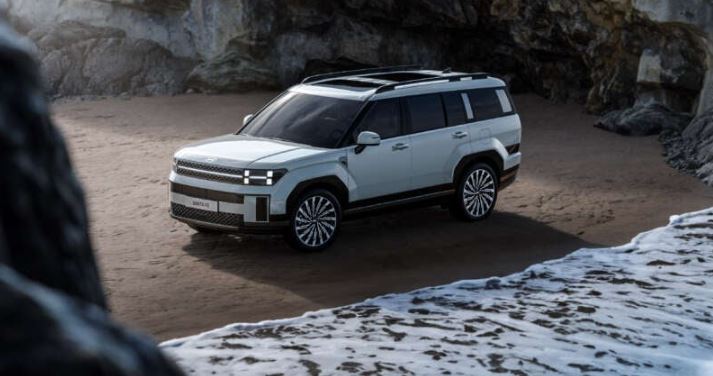
Among the noteworthy design elements are the flared wheel arches, which impart a sporty and rugged demeanor to the Santa Fe’s profile. The sleekly angled windscreen adds an element of elegance, flowing seamlessly into the gently sloping roofline that culminates in an entirely upright tailgate. Illuminating the path ahead, the headlamps showcase Hyundai’s signature ‘H’-shaped LED daytime running lights (DRLs), reminiscent of the design found in the new Exter model. Enhancing the vehicle’s sophisticated appeal, a striking light bar spans the primary grille. The front fascia combines black and body-colored trim in a tasteful blend, with triangular-shaped inserts accentuating both the grille and lower intake, infusing a touch of modernity and visual allure into the overall aesthetics of the Santa Fe.
Sleek and Functional Design Elements:
The 5th generation Santa Fe showcases a large, van-like tailgate that extends from the rear of the vehicle. Mirroring the front, the taillights also feature the signature ‘H’ light design. Below the taillights, a black trim complements the all-around black color of the body cladding. Additional features include reflectors, reverse lights, and a single exhaust finisher, completing the rear design.

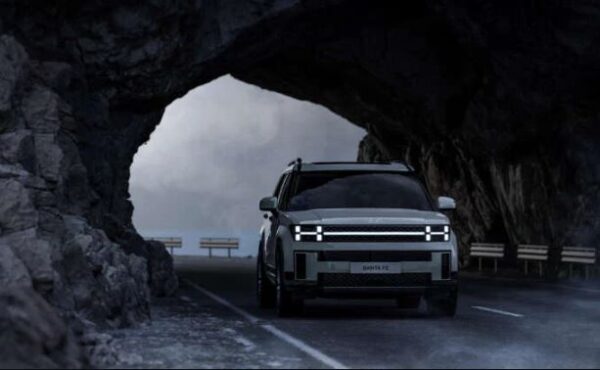
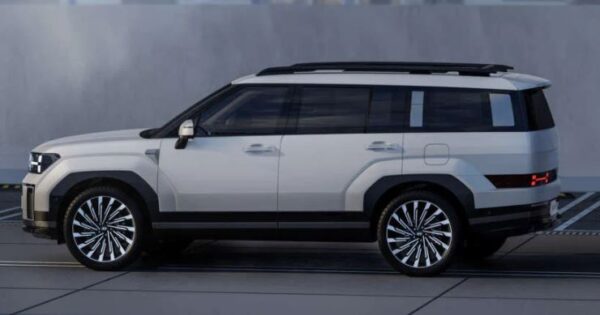
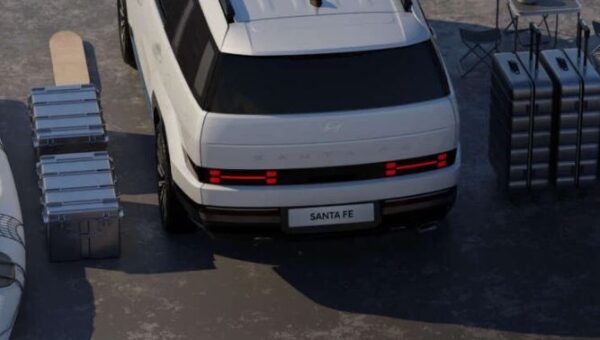
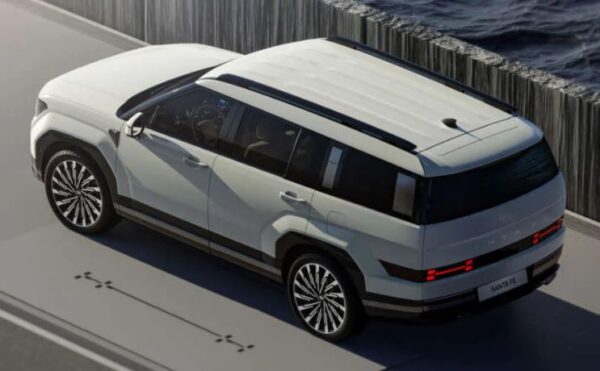
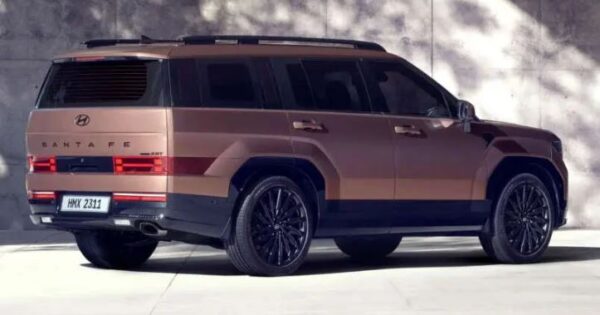
Powerful Performance and Drivetrain Options:
Hyundai will offer the Santa Fe with its HTRAC all-wheel-drive system, providing enhanced traction and control. Under the hood, a 2.5L turbocharged four-cylinder engine will be available. However, it remains uncertain if the previous model’s Smartstream G2.5 T-GDI engine, coupled with an 8-speed dual-clutch gearbox, will be carried over to the new generation.
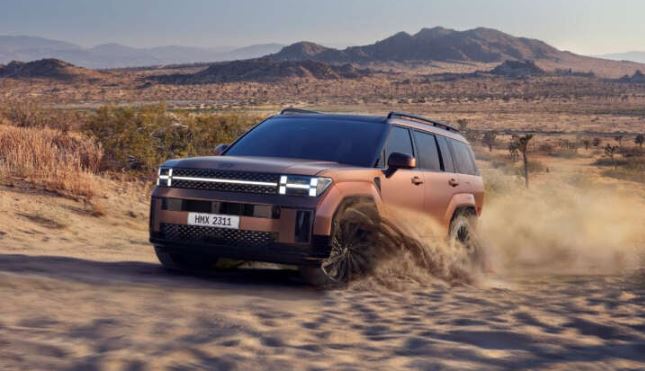
A Contemporary and Streamlined Cabin Design:
Upon entering the Santa Fe, drivers and passengers are greeted with an upright dashboard that exudes a modern and minimalist design aesthetic. The focal point of the interior is the seamlessly integrated 12.3-inch touchscreen infotainment system, which is part of the Panoramic Curved Display. Positioned within the driver’s line of sight, the climate controls, driving-related features, and media playback buttons are conveniently located on an angled panel just below the central air vents. Notably, Hyundai has relocated the gear selector to a steering column stalk, resulting in a clean and uncluttered center console that enhances the overall sense of spaciousness and simplicity.
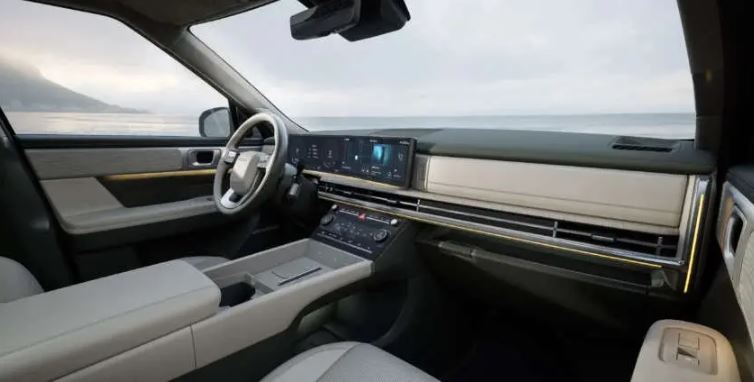
Ample Space for Outdoor Adventures:
Hyundai emphasizes the Santa Fe’s suitability for outdoor enthusiasts by highlighting its spacious and versatile interior. As a three-row SUV, the vehicle offers ample room for both passengers and cargo, accommodating the needs of active individuals and families. The second and third-row seats can be fully folded, providing the flexibility to configure the interior for various purposes, including creating a camping setup as depicted in the press photographs. Moreover, opening the rear tailgate creates a terrace-like environment, allowing occupants to enjoy the outdoors with ease.
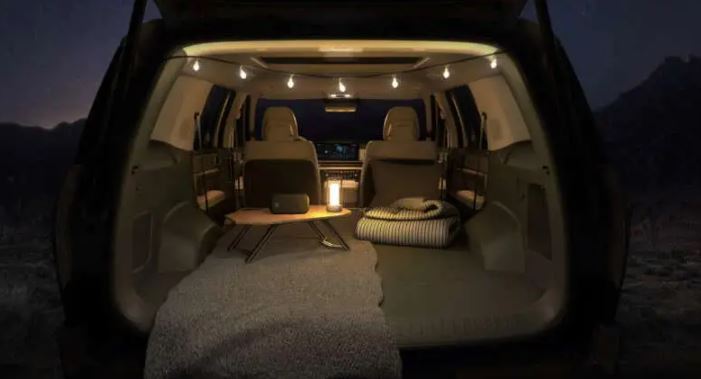
Elegance and Sustainability Combined:
In terms of interior materials, Hyundai combines elegance with sustainability in the Santa Fe. The seats are upholstered in Nappa leather, exuding a luxurious feel, while the wood-patterned trim adds a touch of sophistication. To enhance the feeling of spaciousness, the seats and headliner feature vivid colors that create an open and airy ambiance within the cabin. Demonstrating a commitment to environmental responsibility, Hyundai incorporates recycled plastic into various interior elements, such as the suede headliner, floor mats, and second- and third-row seatbacks. Additionally, the crash pad and door trim covers are made from environmentally friendly leatherette, contributing to the vehicle’s eco-conscious design approach.
Convenience and Practicality:
Hyundai places emphasis on the Santa Fe’s abundance of useful interior amenities. The vehicle boasts twin wireless phone chargers situated behind a panel with charging ports, ensuring hassle-free charging on the go. Deep cupholders on the center console provide secure storage for beverages, while the storage space underneath the console offers additional organizational options. Furthermore, the Santa Fe features a convenient shelf area above the glovebox, providing a handy spot for storing small items and personal belongings.
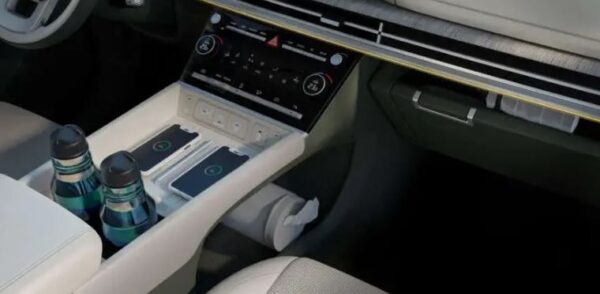
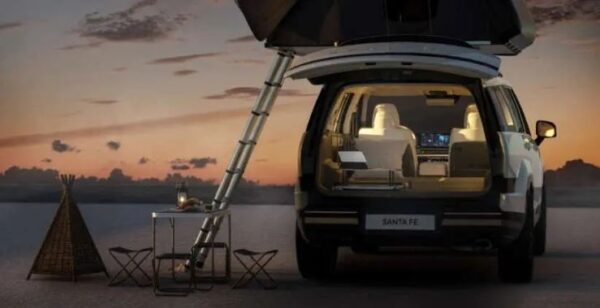
Upcoming Official Reveal and Pricing:
According to Hyundai, the all-new Santa Fe is set to make its official debut in August. The company plans to unveil the vehicle in person, providing a closer look at its features and design. Pricing details are expected to be announced around the same time, giving potential buyers a clearer idea of the cost associated with the 5th generation Santa Fe.
Local Availability and Prospects:
In Pakistan, there is often a tendency for automakers to introduce expensive imported Completely Built Unit (CBU) vehicles promptly, even if locally assembled models are frequently outdated on a global scale. Examples include the current Kia Carnival, the previous generation Santa Fe, and the Hyundai Stargazer. It remains to be seen whether Hyundai-Nishat will introduce the new Santa Fe to the Pakistani market when it officially debuts in August. The reception and demand for the all-new 5th generation Hyundai Santa Fe will ultimately depend on factors such as pricing, features, and the preferences of local car buyers.

